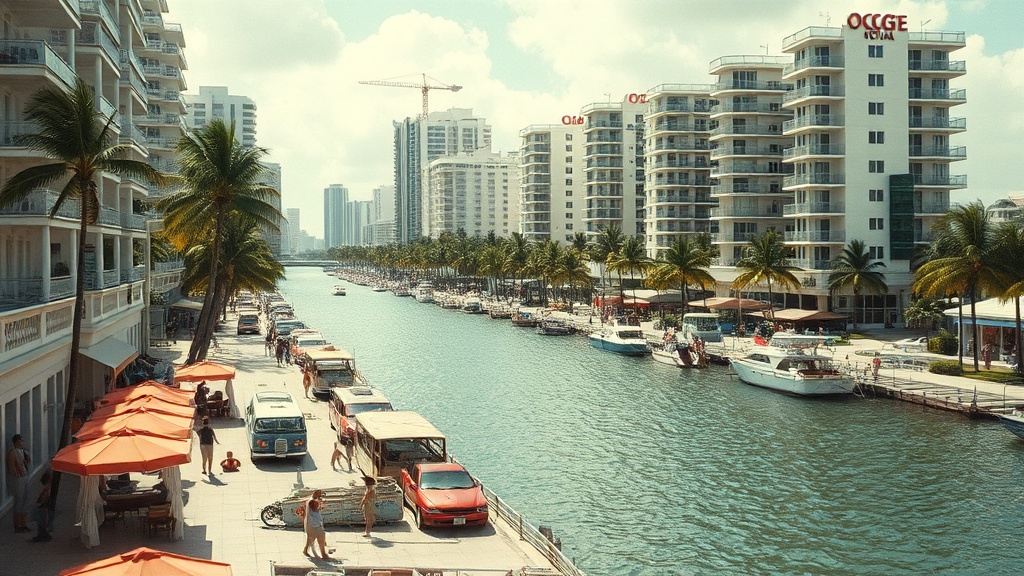Miami Guide: Best Neighborhoods, Food & Nightlife, Outdoor Adventures, and Climate-Smart Moving Tips
Miami blends sun-soaked beaches, a dynamic cultural scene, and a fast-evolving urban fabric that makes it one of the most compelling coastal cities to visit or call home. Whether you’re drawn by the art and nightlife, the diverse culinary landscape, or the city’s efforts to adapt to coastal challenges, Miami offers an energetic mix of lifestyle and opportunity.
What to explore: neighborhoods and culture
Wynwood’s mural-covered streets remain a magnet for street-art lovers and gallery-goers, while the Design District showcases upscale boutiques and contemporary design.
Little Havana is the heartbeat of Cuban culture—walkable, aromatic with cafecito, and alive with music and social life. For a more metropolitan pace, Brickell and Downtown offer sleek high-rises, coworking hubs, and a growing roster of restaurants and rooftop bars.
Miami Beach continues to draw visitors for its iconic boardwalk, Art Deco architecture, and lively beachfront scene.
Food and nightlife
Miami’s food scene is an adventurous blend of Latin American, Caribbean, and global influences.

From family-run Cuban bakeries and seafood shacks to chef-driven tasting menus, dining here runs the gamut.
Nightlife is famously vibrant: lounges and clubs pulse after dark, while late-night eateries and food halls keep the energy going for night owls.
Outdoor life and access to nature
Water is central to Miami’s lifestyle. Biscayne Bay and the surrounding waterways are ideal for paddleboarding, sailing, or a scenic boat tour. The nearby mangroves and Everglades offer eco-adventures—kayaking through narrow channels and guided wildlife tours provide a refreshing contrast to the urban core. Public parks and beaches deliver ample space for running, cycling, and al fresco dining.
Mobility and getting around
Miami is increasingly walkable in key districts and offers a mix of public transit and private mobility options. Metromover provides free downtown circulation, while buses and rail connect broader neighborhoods. Rideshare and bike-share services are widely available. For a seamless visit, plan itineraries around clusters of attractions—Wynwood, the Design District, and Midtown are easily combined on foot or a short ride.
Climate resilience and real estate considerations
As a coastal metropolis, Miami is actively investing in infrastructure and building strategies to address flooding and sea-level considerations. Property buyers and renters often weigh elevation, flood mitigation features, and insurance realities when choosing homes. Developers are incorporating resilient design—elevated structures, improved drainage, and storm-resistant materials—to meet evolving local codes and community priorities.
Practical tips for visitors and residents
– Visit neighborhoods in the morning or late afternoon to avoid midday heat on the beach.
– Book popular restaurants and nightlife venues ahead to secure peak-time reservations.
– Keep a flexible plan for outdoor activities; brief downpours can pass quickly but may alter water-based outings.
– If relocating, research neighborhood walkability, transit access, and flood-zone information to match lifestyle needs.
Why Miami continues to attract attention
A mix of cultural richness, entrepreneurial energy, and natural beauty keeps Miami on many radars. It’s a city that invites exploration—from gallery-hopping and culinary discoveries to active, water-centered recreation—while actively shaping how it adapts to coastal living. Whether you’re visiting for a weekend or evaluating a move, Miami promises a vivid urban experience with plenty to discover.